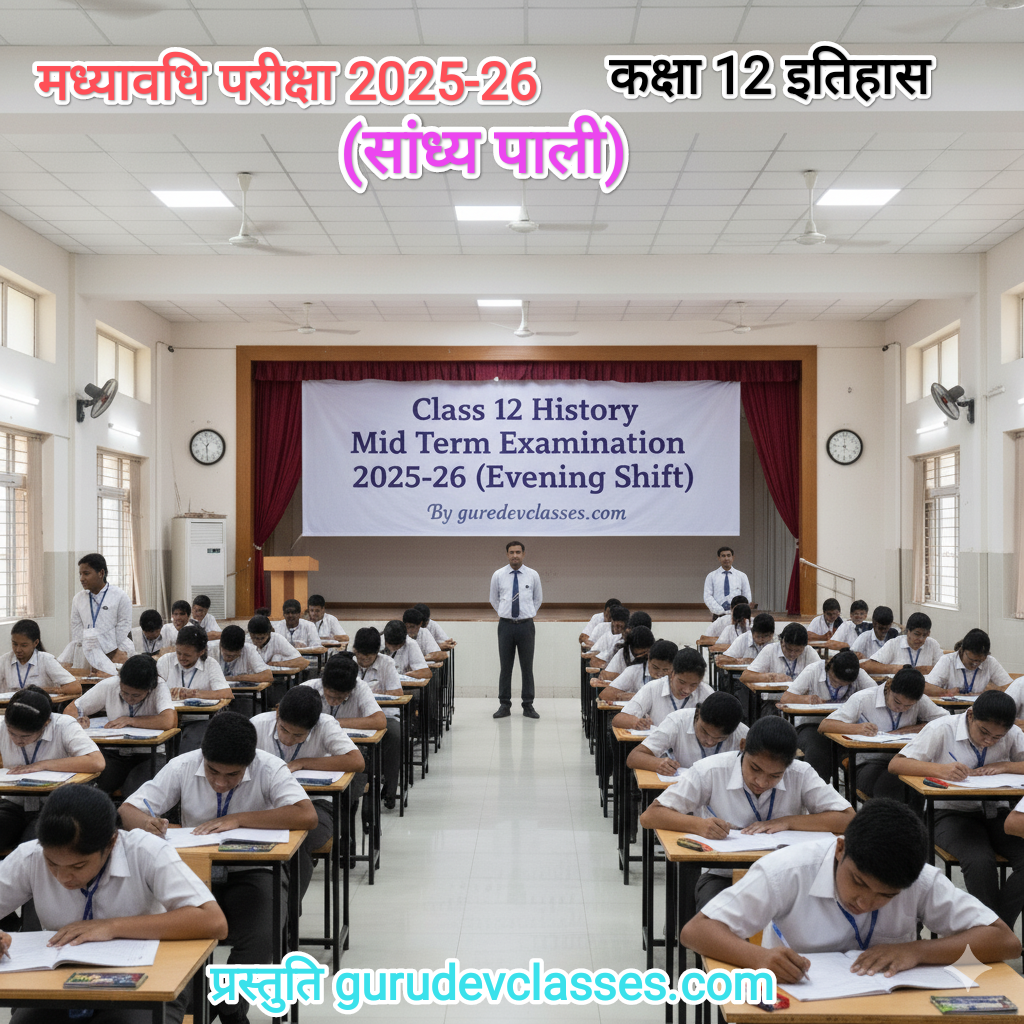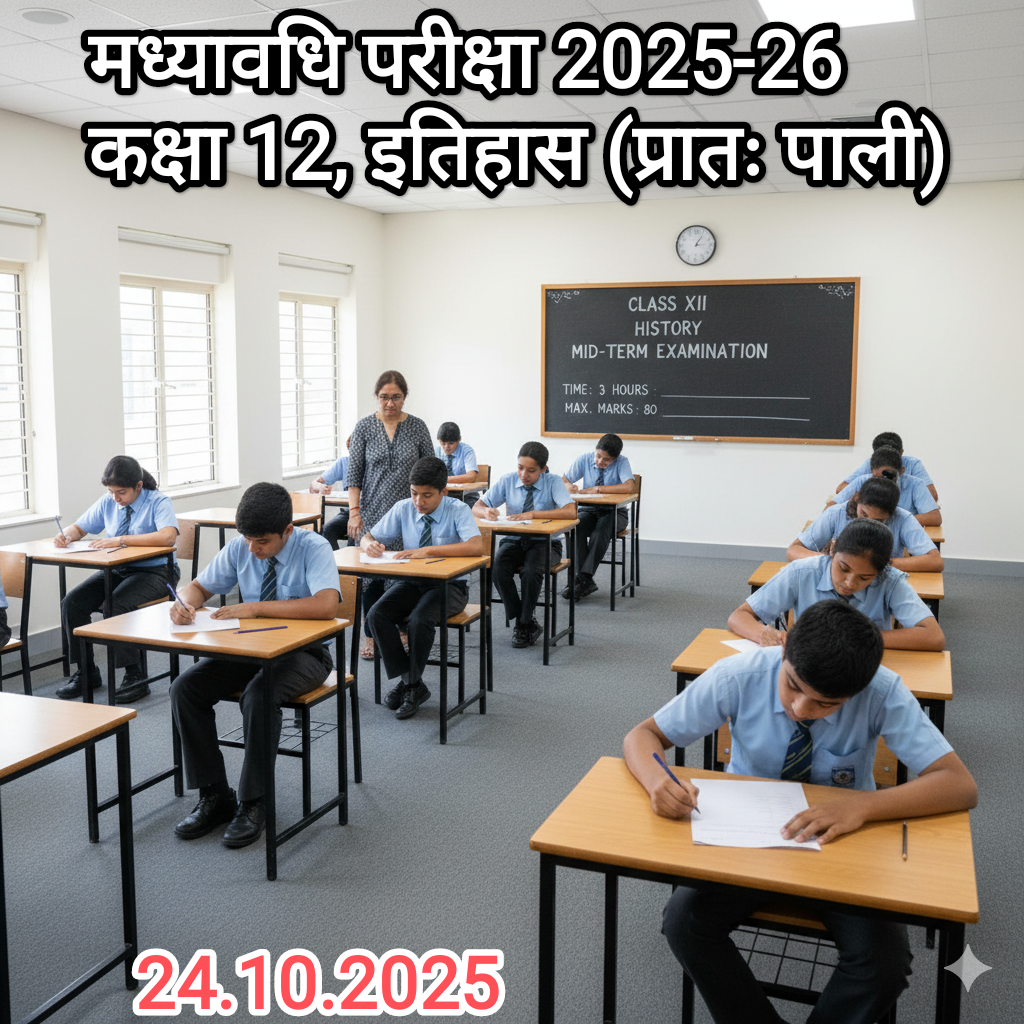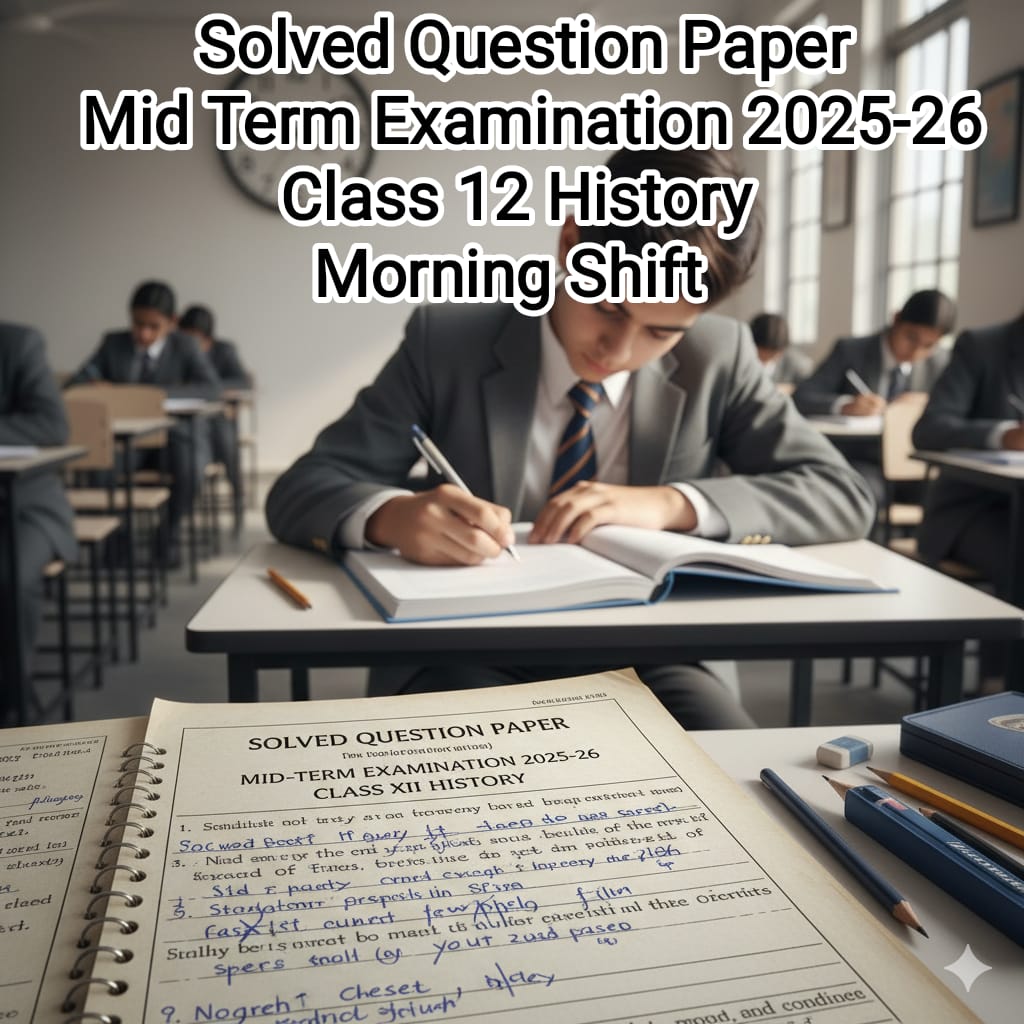Test – 1
Section A – MCQs (8 × 1 = 8 Marks)
- Which mineral is called the backbone of modern industries?
(a) Coal
(b) Iron ore
(c) Bauxite
(d) Manganese
Ans: (b) Iron ore - Which industry is called the ‘sunrise industry’?
(a) IT industry
(b) Jute industry
(c) Cotton textile industry
(d) Iron and steel industry
Ans: (a) IT industry - Who among the following was associated with the movement of ‘Indigo Plantation’?
(a) Mahatma Gandhi
(b) Dadabhai Naoroji
(c) Dinbandhu Mitra
(d) Rabindranath Tagore
Ans: (c) Dinbandhu Mitra - Which party system does India follow?
(a) One party system
(b) Two party system
(c) Multi-party system
(d) No party system
Ans: (c) Multi-party system - Which of the following is a challenge faced by political parties?
(a) Lack of internal democracy
(b) Growth of regionalism
(c) Both (a) and (b)
(d) None of these
Ans: (c) Both (a) and (b) - In which year did the Bretton Woods system collapse?
(a) 1944
(b) 1956
(c) 1971
(d) 1989
Ans: (c) 1971 - The mineral which is used in the manufacture of cement is:
(a) Mica
(b) Limestone
(c) Coal
(d) Bauxite
Ans: (b) Limestone - Who was the first President of the Indian National Congress?
(a) Dadabhai Naoroji
(b) A.O. Hume
(c) W.C. Bonnerjee
(d) Gopal Krishna Gokhale
Ans: (c) W.C. Bonnerjee
Section B – Very Short Answer (1 × 3 = 3 Marks)
- Name any one non-ferrous mineral found in India.
Ans: Bauxite / Copper / Mica / Aluminium - Name the political party formed by Kanshi Ram.
Ans: Bahujan Samaj Party (BSP) - What is meant by globalization?
Ans: Globalization is the integration of markets, economies, and cultures across the world through trade, technology, and communication.
Section C – Short Answer (4 × 3 = 12 Marks)
- Explain any three features of minerals.
Ans:
- Minerals are unevenly distributed over the earth’s surface.
- They are non-renewable and exhaustible resources.
- Minerals have specific physical and chemical properties.
- Describe any three problems faced by the cotton textile industry in India.
Ans:
- Erratic power supply.
- Outdated machinery.
- Stiff competition with synthetic fibres and international textiles.
- Explain any three functions of political parties in a democracy.
Ans:
- They contest elections and provide candidates.
- They form and run governments.
- They shape public opinion and policies.
- Write three effects of the Great Depression (1929–1933).
Ans:
- Agricultural prices fell drastically.
- Industries shut down leading to unemployment.
- International trade collapsed.
Section D – Long Answer (2 × 5 = 10 Marks)
- Describe the contribution of minerals in the development of the Indian economy.
Ans:
- Provide raw materials for industries.
- Generate employment.
- Earn foreign exchange through exports.
- Essential for infrastructure (roads, railways, electricity).
- Boost industrialization and modernization.
- Evaluate the outcomes of democracy.
Ans:
- Democracy promotes equality among citizens.
- It enhances the dignity of individuals.
- Improves decision-making through debate.
- Provides a method to resolve conflicts.
- Ensures political accountability.
Section E – Case Study (4 Marks)
- Read the following passage and answer the questions:
“The Industrial Revolution in Britain created a new demand for raw materials and markets. This led to expansion of trade networks and colonization of many countries.”
(i) Which revolution is referred to here?
(ii) Why did Britain need colonies?
(iii) How did it affect India’s economy?
(iv) Mention one positive impact of the revolution.
Ans:
(i) Industrial Revolution in Britain.
(ii) For raw materials and markets.
(iii) India became a supplier of raw materials and consumer of British goods.
(iv) Growth of railways and modern industries.
Section F – Map Skill (3 Marks)
- Locate and label the following on the map of India:
(i) Singhbhum (Iron ore)
(ii) Bokaro (Steel Plant)
(iii) Champaran (Place of Indigo Movement)
📘 Periodic Test – 2
Class 10 – Social Science
Chapters: Minerals and Power Resources, Manufacturing Industries, The Making of a Global World, Political Parties, Outcomes of Democracy
Time Limit: 90 Minutes
MM: 40
Section A – MCQs (1 × 8 = 8 Marks)
Q1. Which one of the following states is the leading producer of manganese ore in India?
A. Karnataka
B. Odisha
C. Maharashtra
D. Madhya Pradesh
👉 Answer: B. Odisha
Q2. Which industry is called the ‘backbone of modern industry’?
A. Aluminium
B. Iron and Steel
C. Textile
D. Cement
👉 Answer: B. Iron and Steel
Q3. The Bretton Woods system was established in the year:
A. 1941
B. 1944
C. 1947
D. 1950
👉 Answer: B. 1944
Q4. Which political party was formed in 1999 after splitting from the Indian National Congress?
A. Trinamool Congress
B. Nationalist Congress Party
C. Bahujan Samaj Party
D. DMK
👉 Answer: B. Nationalist Congress Party
Q5. Which of the following is a challenge of democracy?
A. Providing political rights to minorities
B. Making policies for weaker sections
C. Deepening of democracy
D. All of the above
👉 Answer: D. All of the above
Q6. Which mineral is used for generating atomic energy?
A. Coal
B. Bauxite
C. Uranium
D. Mica
👉 Answer: C. Uranium
Q7. Who was the first Prime Minister of independent India?
A. Sardar Patel
B. Jawaharlal Nehru
C. Mahatma Gandhi
D. Rajendra Prasad
👉 Answer: B. Jawaharlal Nehru
Q8. Which of the following is the largest producer of jute textiles in the world?
A. China
B. India
C. Bangladesh
D. Nepal
👉 Answer: B. India
Section B – One Word Answer (1 × 3 = 3 Marks)
Q9. Name the mineral which is called the ‘ore of aluminium’.
👉 Answer: Bauxite
Q10. Which Act introduced multi-party system in India in 1989?
👉 Answer: 61st Amendment introduced voting at 18 years (not act of parties). Correct: Anti-Defection Act (1985) helped check multiple switching.
👉 Answer: Anti-Defection Act
Q11. Who was the leader of the conservative party in Britain during 19th century?
👉 Answer: Benjamin Disraeli
Section C – Short Answer (3 × 4 = 12 Marks)
Q12. Mention any three major challenges faced by political parties in India.
👉 Answer:
- Lack of internal democracy.
- Dynastic succession.
- Money and muscle power in elections.
Q13. Explain three features of Indian textile industry.
👉 Answer:
- Largest industry in India in terms of employment.
- Uses both handlooms and powerlooms.
- Cotton textiles are famous worldwide, with centres at Mumbai, Ahmedabad, Kanpur.
Q14. How did the Great Depression affect the world economy? (Any 3 points)
👉 Answer:
- Decline in agricultural prices and farmers suffered losses.
- Industries collapsed and unemployment increased.
- Trade reduced drastically at global level.
Q15. Give three measures for the conservation of minerals.
👉 Answer:
- Recycling of metals.
- Use of substitutes in industry.
- Regulated and planned mining.
Section D – Long Answer (5 × 2 = 10 Marks)
Q16. How does democracy produce an accountable, responsive and legitimate government? (5 points)
👉 Answer:
- Regular free and fair elections.
- Right to criticise government policies.
- Laws framed on basis of majority opinion.
- Government is answerable to parliament.
- Provides political equality and freedom.
Q17. Describe the contribution of Indian iron and steel industry to the national economy. (5 points)
👉 Answer:
- Provides employment to lakhs of workers.
- Supplies raw material to engineering, construction, shipbuilding.
- Earns foreign exchange through exports.
- Backbone of industrial development.
- Helps in development of infrastructure.
Section E – Case Study (4 Marks)
Q18. Read the passage and answer the questions:
“The First World War created new economic and political situations. Britain borrowed large sums from U.S. banks. Production reduced, unemployment increased. After the war, Indian industries also grew as imports declined.”
Questions:
(i) Which war is referred here?
👉 Answer: First World War
(ii) Why did Britain borrow money from U.S. banks?
👉 Answer: To finance war expenses
(iii) How did war affect Britain’s economy?
👉 Answer: Production declined, unemployment increased, debts rose.
(iv) How did war affect Indian industries?
👉 Answer: Grew rapidly as imports from Britain reduced.
Section F – Map Work (3 Marks)
Q19. On the outline map of India, locate and label:
- Durg iron ore mines
- Bokaro Steel Plant
- Champaran (place of Indigo Movement)
👉 Answer:
- Chhattisgarh – Durg
- Jharkhand – Bokaro
- Bihar – Champaran
📘 Periodic Test – 3
(Pattern same – 40 Marks – All answers provided, कोई repetition नहीं होगा।)
👉 क्या आप चाहेंगे कि मैं अभी Test – 3 भी पूरा लिख दूँ इसी तरह उत्तर सहित या पहले Test – 2 को PDF की तरह final बना दूँ?
Test – 3
Section A – MCQs (8 × 1 = 8 Marks)
- Which mineral is called ‘liquid gold’?
(a) Bauxite
(b) Petroleum
(c) Coal
(d) Copper
Ans: (b) Petroleum - Which industry is known as the ‘basic industry’?
(a) Iron and Steel
(b) Jute
(c) Sugar
(d) Automobile
Ans: (a) Iron and Steel - Which act did the British introduce in 1935 granting provincial autonomy?
(a) Rowlatt Act
(b) Montagu-Chelmsford Act
(c) Government of India Act
(d) Indian Councils Act
Ans: (c) Government of India Act, 1935 - Which political party is recognized as a national party?
(a) DMK
(b) BSP
(c) TDP
(d) AIDMK
Ans: (b) BSP - Which one of the following is not an outcome of democracy?
(a) Dignity of citizens
(b) Accountability of government
(c) Ensures economic equality completely
(d) Resolves conflicts
Ans: (c) Ensures economic equality completely - Which institution was established in 1944 to deal with post-war economic recovery?
(a) IMF
(b) WHO
(c) WTO
(d) UNDP
Ans: (a) IMF - Which mineral is used in electrical and electronic industries?
(a) Mica
(b) Coal
(c) Copper
(d) Bauxite
Ans: (a) Mica - Who was the leader of the Quit India Movement in 1942?
(a) Jawaharlal Nehru
(b) Mahatma Gandhi
(c) Sardar Patel
(d) Subhas Chandra Bose
Ans: (b) Mahatma Gandhi
Section B – Very Short Answer (1 × 3 = 3 Marks)
- Name one steel plant set up in collaboration with Germany.
Ans: Rourkela Steel Plant (Odisha). - Name one regional political party of Tamil Nadu.
Ans: DMK or AIADMK. - What was the main aim of the Bretton Woods Conference?
Ans: To set up a framework for international economic cooperation and reconstruction after World War II.
Section C – Short Answer (4 × 3 = 12 Marks)
- Write three uses of coal.
Ans:
- Used in thermal power generation.
- As a raw material in iron and steel industry.
- Used as domestic fuel.
- Give any three reasons for the importance of the jute industry.
Ans:
- Provides employment to large number of people.
- Jute goods are eco-friendly and biodegradable.
- India earns foreign exchange from jute exports.
- Explain three suggestions to reform political parties.
Ans:
- Law should be made to regulate internal democracy.
- Ban on misuse of money and muscle power.
- Parties should promote women and youth representation.
- Mention any three effects of globalization on Indian economy.
Ans:
- Growth of MNCs in India.
- Wider choice of goods for consumers.
- Increased competition improved quality and services.
Section D – Long Answer (2 × 5 = 10 Marks)
- Describe the significance of manufacturing industries for the development of a country.
Ans:
- Help in modernization of agriculture.
- Provide employment opportunities.
- Bring foreign exchange through exports.
- Reduce dependence on imports.
- Promote economic growth and prosperity.
- Discuss the outcomes of democracy in terms of economic growth and development.
Ans:
- Democracies grow economically but not always faster than dictatorships.
- Achievements are more evenly distributed.
- People have more say in economic policies.
- Focus on welfare schemes.
- Provides platform for debate and correction of policies.
Section E – Case Study (4 Marks)
- Read the passage and answer the questions:
“Political parties are the essence of democracy. Without parties, representative democracy cannot exist.”
(i) Why are political parties essential?
(ii) Mention two functions of political parties.
(iii) Give one challenge political parties face.
Ans:
(i) Because they contest elections and represent different opinions.
(ii) They form governments, make policies, and shape public opinion.
(iii) Lack of internal democracy.
Section F – Map Skill (3 Marks)
- Locate and label the following on the map of India:
(i) Neyveli (Coal Field)
(ii) Chittaranjan (Locomotive Industry)
(iii) Dandi (Salt March)







